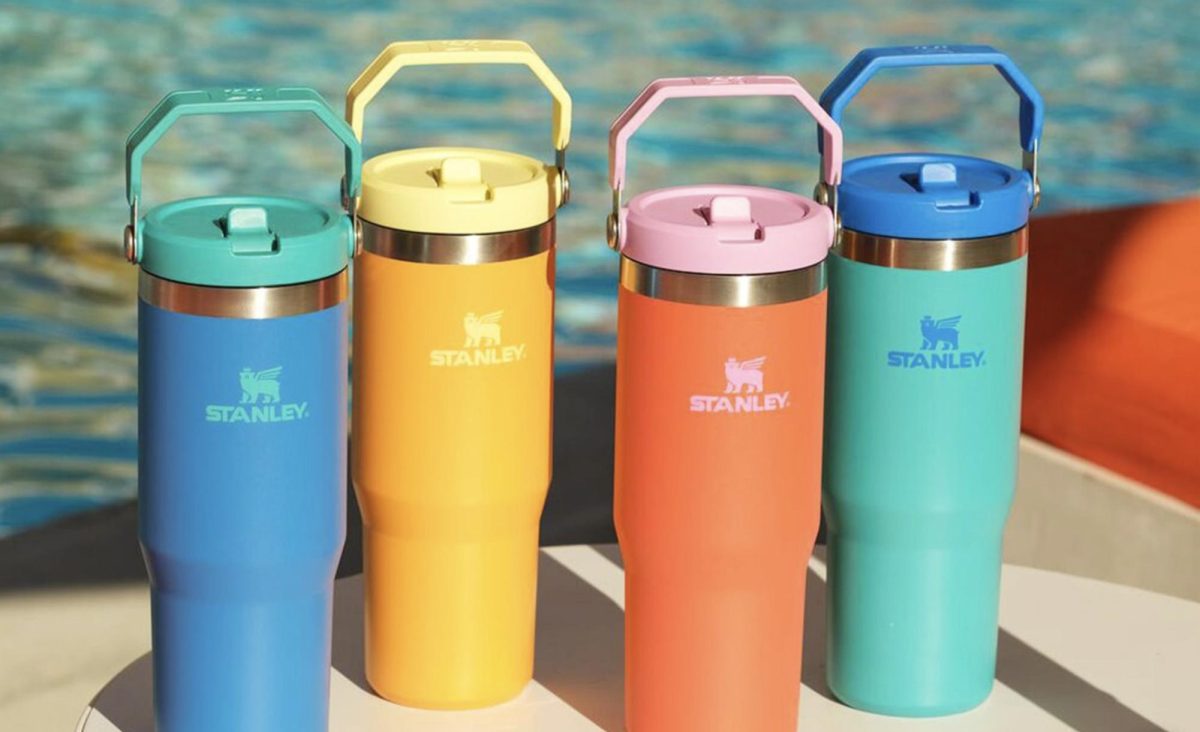Reusable bottles and tumblers are often touted as eco-friendly solutions that reduce waste and protect the environment. Recently, Stanley tumblers have become a rising trend on TikTok, and have skyrocketed in popularity as a trendy must-have. While the intention behind using reusable containers is commendable, it raises an important question: Are these tumblers really as environmentally beneficial as we think?
The production of stainless steel tumblers involves a significant environmental footprint. The lifecycle of one tumbler—including manufacturing, usage, and disposal—emits 671 grams of greenhouse gases. To put this into perspective, this is 13 times the emissions of a single-use plastic cup (52g) and 24 times that of a paper cup (28g). For a tumbler to offset this impact, it needs to be used at least 1,000 times or consistently for a year. Unfortunately, a survey revealed that, on average, tumblers are used only 45.8 times before being discarded.
Experts agree that reusable tumblers and bottles can significantly reduce waste and environmental harm, but their benefits are only realized with proper use. Purchasing dozens—or even hundreds—of tumblers to match trends, moods, or outfits undermines their eco-friendly purpose. Overconsumption of reusable items not only contradicts their sustainable intent but also contributes to waste through excessive production and eventual disposal. This behavior reflects a growing trend of “green consumerism,” where people purchase eco-friendly products excessively, leading to greater resource depletion instead of conservation. To truly make a positive environmental impact, consumers should focus on using one or two reusable tumblers consistently rather than succumbing to fleeting trends.
The most sustainable way to use tumblers is to stick with one or two high-quality options and use them extensively. Regular, long-term use ensures that these items truly offset the environmental costs associated with their production. By reducing the need to manufacture additional tumblers, we can minimize greenhouse gas emissions and the energy-intensive processes involved. This approach also decreases reliance on disposable cups, helping to combat waste pollution. Adopting mindful consumption habits, like investing in fewer but durable reusable bottles, is a practical and effective step toward a more eco-friendly lifestyle.
While tumblers have the potential to reduce waste and promote sustainability, their actual environmental impact hinges on how they are used. The constant cycle of buying and discarding products not only strains the planet’s resources but also undermines the core purpose of eco-friendly items. Instead, prioritizing a single, high-quality tumbler and using it consistently over time can make a meaningful difference. By extending the lifespan of reusable containers, we minimize waste, reduce greenhouse gas emissions, and align with the principles of sustainability. True sustainability is not about owning the latest “green” product—it’s about making intentional choices that prioritize the health of the planet over temporary convenience.








